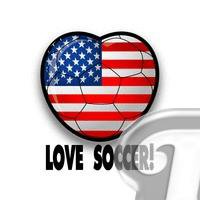An Overview of American Soccer History

The College Era, and Rules Consolidation, 1862-1875
The Working-Class and Immigrant Eras, 1875-1894
The First Dynasties, 1913-1921
The 1960's: The Birth of the American Soccer Renaissance
Outdoor soccer reaches a low: 1985
The Rebirth of Outdoor Soccer, 1988-1994
1994: The World Cup comes to America
From World Cup to Major League Soccer (1995-1996)

A Change in Fortunes, 1988
USSF knew that it needed a major showcase event in the US to promote the sport to the top level, and hence, it spared no effort in 1987-88 when it bid for the 1994 Cup. Despite the recent travails of the National team, FIFA officials were impressed by the size and potential of the US market and saw it as an opportunity to open new markets. The USSF stressed these factors, as well as the success of the 1984 Olympics, and produced an impressive set of proposed venues for the competitions. Most importantly, it committed to establishing a bona-fide first division professional league to be in operation by the time the cup was held. The US was also helped by the overall weakness of the competing bidders; Brazil had enormous stadiums, which looked good on the surface but in reality wee dilapidated and poorly maintained, and Morocco had only two stadiums that met FIFA requirements. Werner Fricker, then the USSF President, had learned from the mistakes made in the previous bid. The result was the awarding of the 1994 World Cup to the United States on the condition that they establish a 1st division professional league. After the USSF made a slow start in organizing the tournament, FIFA became disenchanted, seeing Fricker as too provincial, and without the businessacumen needed to carry off a project of this magnitude, and so in 1990, they promoted Alan Rothenberg to run against him for USSF President. Rothenberg, who had headed the US Olympic Soccer program, was an experienced international lawyer with experience in dealing with the soccer bigwigs and professional organizations on an international level, and who understood that the World Cup was big business and needed an organization to match.
If the Americans were to make an appropriately impressive appearance as hosts of the 94 Cup, it would have to do a substantial amount of development. The team had been in disarray for years, and US players were hampered by lack of experience. In the NASL, the Americans were generally bench-warmers and substitutes, despite quotas requiring an increasing minimum number of US players to be on the roster and on the field at all times. The colleges, from which almost all National team players came, simply did not provide adequate playing time due to the constricted fall playing season and the inability of college players to play on amateur teams outside of the collegiate season. The indoor leagues, which provided most of the professional soccer employment, did not prepare players for the type of game they would play in the Cup. In fact, it was almost a completely different style of game, and this experience was of little value elsewhere.
The first task at hand was to provide adequate high-level competition for the players who would make up the core of the team. The ASL and WSA provided a decent enough level of play for Americans to land playing spots abroad, but were far from sufficient to train a team for a respectable position in the World Cup. It was essential that an opportunity for consistent, long-term high-level competition be made available for National team players, waiting for the new League was not an option. To address this issue, the USSF developed a National team Training Program, in which players were contracted full-time to the National Team as salaried members, and would play year-around with the team. From this point on through the 1994 Cup, most roster players were contracted full-time with the USSF. When the Training Program started, the National team consisted of a hodge-podge of players from the ASL III, the WSA, the indoor MISL, various colleges and amateur teams. Pretty soon, most National team players were contracted full-time to play for the National Team, giving them for the first time extensive playing at a competitive level.